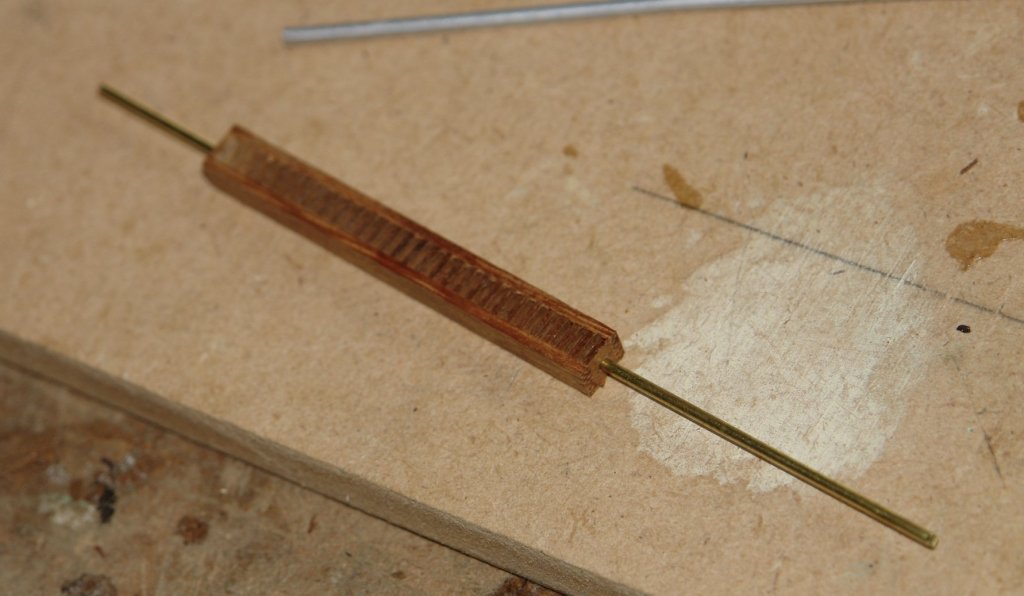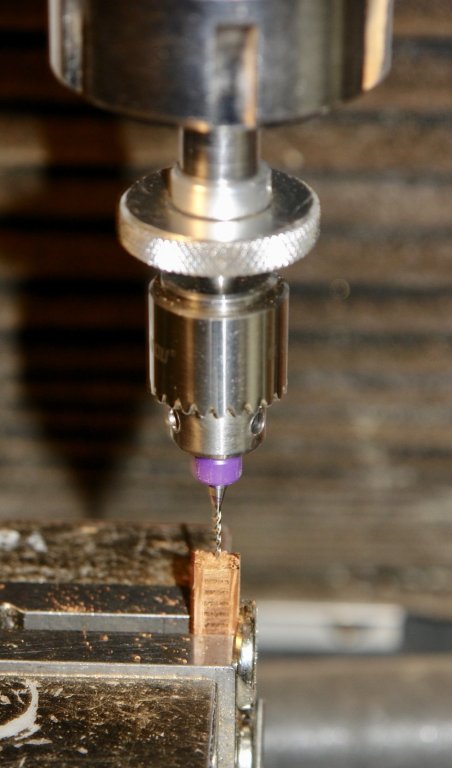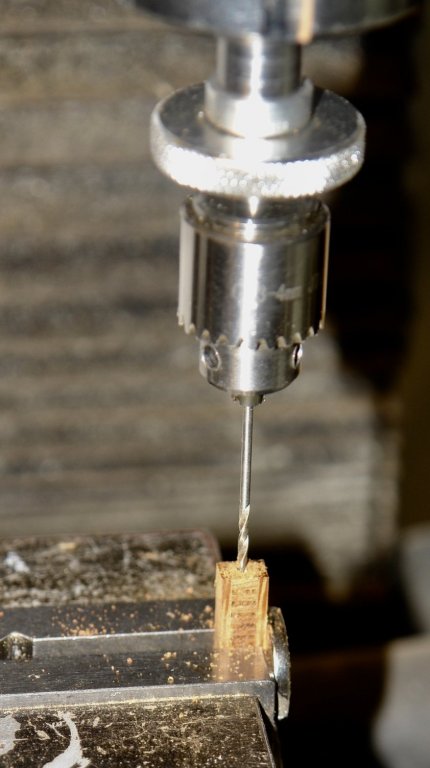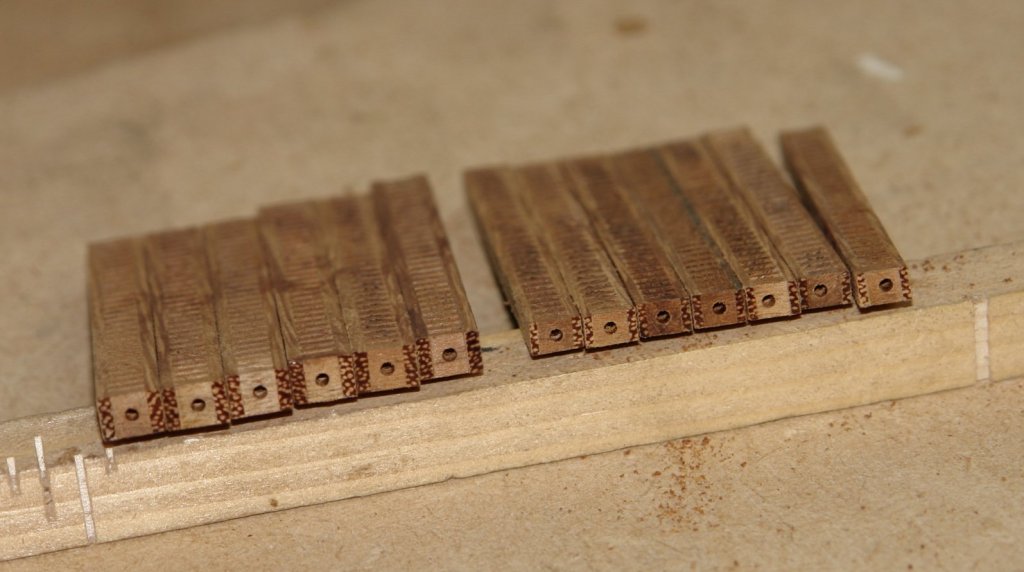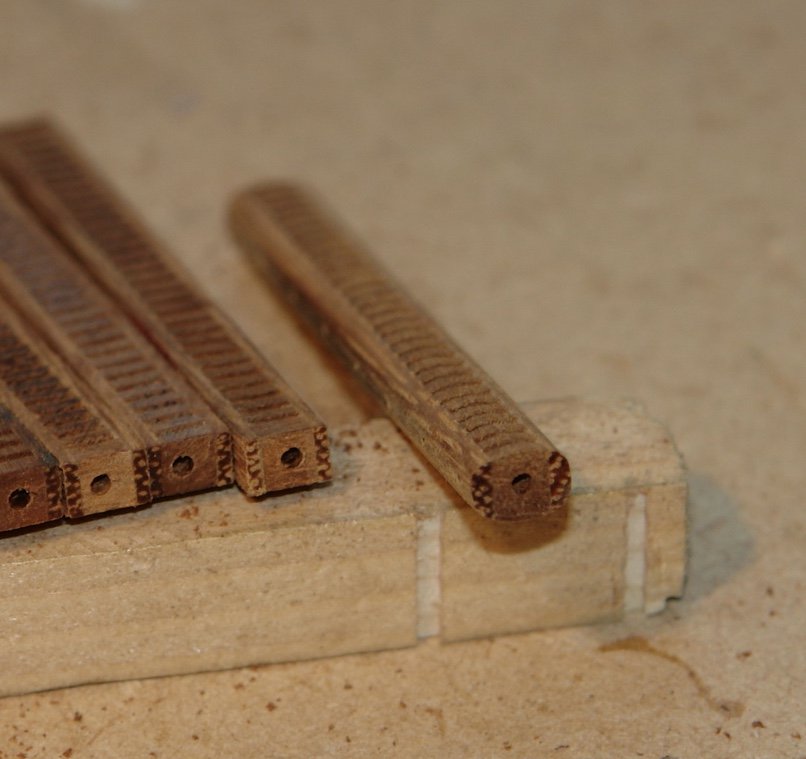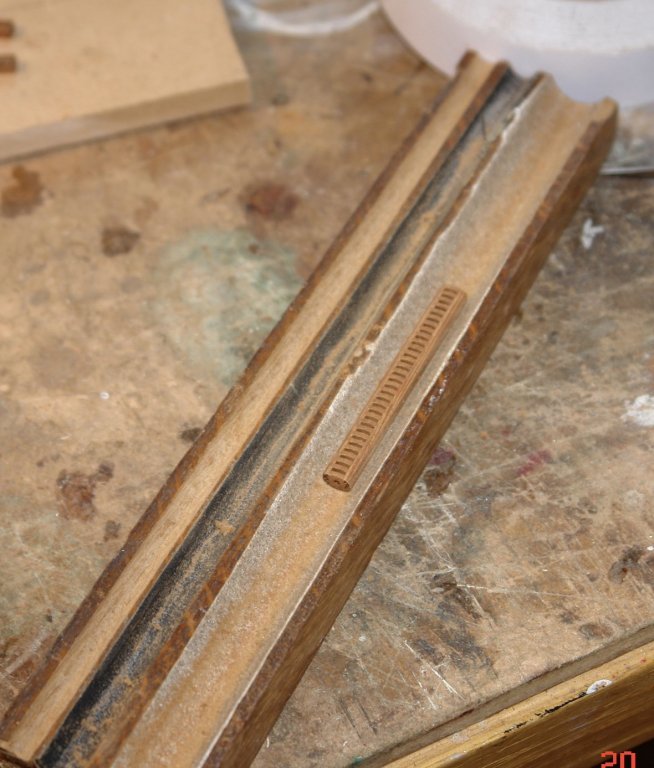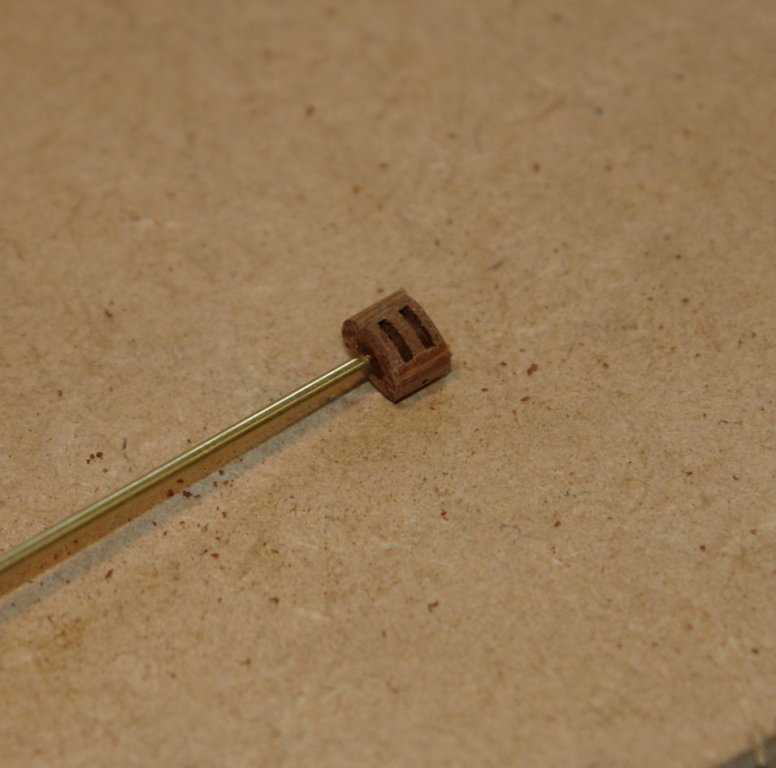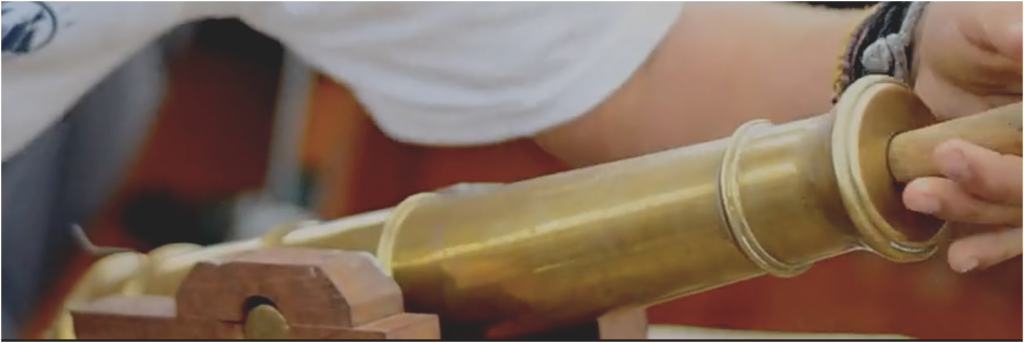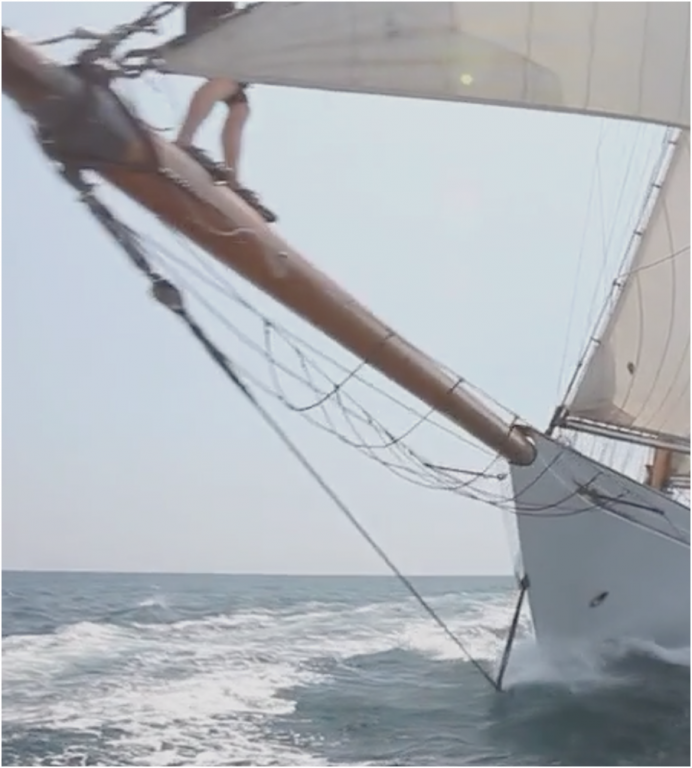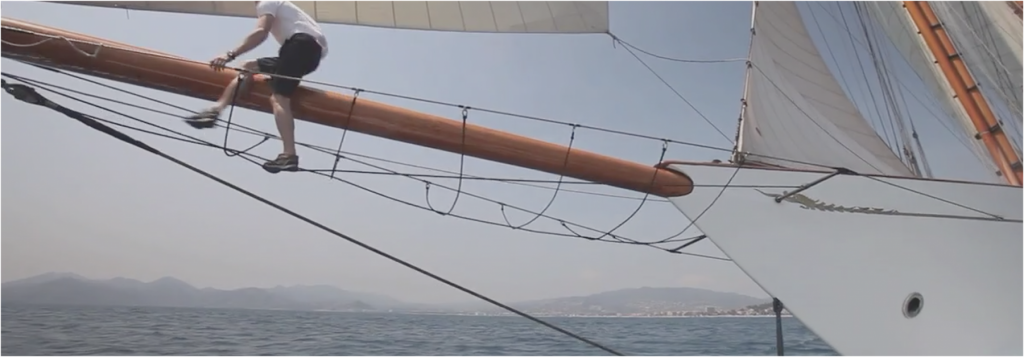-
Posts
3,867 -
Joined
-
Last visited
Content Type
Profiles
Forums
Gallery
Events
Everything posted by KeithAug
-
JD sorry my mistake - reference should have been to Page 21 - 6th August. Page 11 is an earlier version which was a bit over complicated, particularly for the smaller blocks. Richard - thank you - I have thought about an alternative method which I might try at some time. Per - thanks for the feedback
-
Today I started a production run on blocks. Large size doubles and medium size doubles and singles. The method was much the same as explained on page 19 so I won't go through that again. I will however explain a few of my learning points, techniques and tools. I found it important when laminating up the sandwich to apply plenty of PVA glue. It was very easy to get areas which were not bonded and some blocks fell apart when they were cut down to finished size. Having crated the sandwich the "block strips" were sliced off using the table saw and a .031" slitting saw blade 3" diameter 108 teeth. The length of the strips was just long enough to be able to drill along the length (from both ends) using my longest .062" twist drill. The hole was first bored using a .040 micro drill before being extended and opened out with the twist drill. This method helped the hole run true. All the drilling for each size of pulley was done on one setting (drilling head relative to vice). Rare earth magnets were used to create a positive end stop for locating the block strips. Drilling from both ends worked better than I had expected with the alignment being good as witnessed by the rod passed through the hole. I did however get 2 that drifted unacceptably off from the centre. 2nd and 3rd from the right. Holes for the block eyes were drilled while the blocks were still in the strip. A .031" micro drill was used. These are great for accuracy and cleanness of cut but very fragile. One was attracted by the rare earth magnet which applied enough force to break it. For double blocks I needed to drill through the web of the block. The occasional mis location here caused the drill to break out from the web and inevitably this caused it to break. 3 broke in total. Shaping of the blocks into ovals then followed. I had previously made a concave sanding block which is good for repeatably shaping the blocks. I compromised on the sheaves. Making the shaft small and installing sheaves proved very fiddly even on the largest blocks. I decided to make the shaft larger and dispense with the sheaves, when the rope is in you can't see them anyway. The blocks were then parted from the strips using the bench saw and .031" slitting saw blade. Supporting the back of the strip with a sacrificial piece of wood was essential to stop splintering of the blocks. The sharp edges on the cut blocks were softened by hand sanding with 120 grit paper followed by 400 grit wet and dry. I found that putting the brass shaft through the block eased handling during the sanding operation. The shaft was glued in with CA and then the shaft was parted off using a piercing saw and cleaned up with the wet and dry. The 3 blocks types are in the following picture. Large double, medium double and single. Large is .280" high and medium is .240" high. It took 6 hours to make the following:-
-
I seem to be in one of those phases where lots of stuff is getting in the way of ship building. I did however find a bit of time today to rig the shrouds on the main mast. The piece of dowel between the masts is spacer holding the masts parallel while I do the rigging. The next job is the running back stays bur for these I need blocks. I previously made the "stock" for the smallest blocks. To proceed furthrer I needed to progress to medium and large blocks. Accurate slitting on the saw took a while.
-
Kees, A novel approach, but it seems to work quite well.
- 193 replies
-
- wilhelmina vii
- fishing
-
(and 1 more)
Tagged with:
-
It looks a bit like the creature from the film The Blob.
- 193 replies
-
- wilhelmina vii
- fishing
-
(and 1 more)
Tagged with:
-
Nils, in the past I always used a hand held jig saw but I recently bought a scroll saw. I'm sort of hoping it makes cutting out frames easier.
- 692 replies
-
- eagle of algier
- chebec
-
(and 2 more)
Tagged with:
-
Dan. Remarkably good looking finished model.
- 295 replies
-
- amatsukaze
- halinski
-
(and 2 more)
Tagged with:
-
Hello Kees, it will be good to see how this one turns out. Hope you are keeping well and the job hunting is on track.
- 193 replies
-
- wilhelmina vii
- fishing
-
(and 1 more)
Tagged with:
-
Hi Nils. Interesting model and a good start. Some of the frames are quite thinly cut, what did you use to cut them?
- 692 replies
-
- eagle of algier
- chebec
-
(and 2 more)
Tagged with:
-
Beautiful work Dan, and very informative.
- 241 replies
-
- queen annes revenge
- pirate
-
(and 2 more)
Tagged with:
-
A little progress (yesterday and today) with the rigging. Altair standing rigging makes use of a lot of steel cable terminated with fittings. Fortunately no need (or desire) for many hours serving lines. But first I had to mount the radar / horns "A" frame on the main mast. I glued it in place and then did the bindings to reflect the detail on the real thing. The "A" frame, radar and horns were made some time ago and reported in an earlier post. And then on to the standing rigging for the fore mast - the shrouds are in place but I have now run out of braided beading wire - ebay to the rescue.
-
Bedford Its always good to get a friendly reminder, no need to be sorry. Derek Thank you for your comment.
-
Hello Bedford. I thought someone might pick this up. I was fairly confident because I laid the floor and built the frame for the french doors. However you caused me to recheck, fortunately spot on. Nils and John, thank you for visiting and for your kind words. John I'll be watching how that canoe develops and Nils when is the next keel laying ceremony?
-
Thank you Per. I find I get a bit drawn into the detail. I wonder if my skills are up to doing something so I give it a try, if it does not work I try again. Sometimes I give in, but most of the time I get comfortable with the result ( Acceptance is helped by my eyesight not being as good as it once was). Once again thank you to all the other visitors. I think I mentioned earlier that I had drilled a couple of holes in the wrong place on the deck. The larger one in particular was bothering me. I considered a couple of options for hiding it including a coil of rope and a drinks tray with wine and beer. Not particularly satisfied with either option I was pleased to be struck by a "flash" of inspiration. The saluting cannon was featured in one of the videos of Altair. I moved on to stepping the fore mast. Verticality, rake and rotational position were all a bit of a concern so I took a deal of care with numerous repeat checks. I started by levelling the hull across the beam and ensuring that the waterline was parallel to the workshop floor. I also marked the rail on either beam with blue masking tape aligned to the ribs. I then used precision eyeballing to sight the athwart ships verticality against the frame of the workshop french doors . To fix the rotational position I sighted down the mast aligning the yards against the blue tape. The process was assisted by the camera flash and the shadow it cast. The rake was set by sighting against the workbench legs (to the side of the yacht).
-
Thanks Richard, I know many would have made a perfect job of a thread solution - I did wonder about setting the thread into the correct shape using PVA glue or similar, but in the end decided I was more confident using beading thread. Michael, thank you. I'm pleased you think it looks good.
-
Thanks Richard, However I started today by trashing yesterdays work for a few reasons: 1, I couldn't get myself convinced that the fishing line would hang in a natural curve. 2, I realised that by not paying great attention to the orientation of the hoops on the ends of the athwartship braided wire that I had introduced a twist that made them want to follow a serpentine path. 3, I didn't feel that I had allowed enough belly below the bowsprit. So it went in the bin and I was glad that I had made all those extra end hoops. To solve the fishing line problem I decided to resort to further use of braided wire, it may not hang under gravity but the shape is more controllable. Fixing the orientation of the end hoops required a bit of a development of the building jig as follows:- Two brass rods (.040" diameter) were slotted through the hoops at each end of the athwartship lines during their manufacture - thus eliminating any twist caused by them being aligned on different axes. To give more belly I widened the base of the jig (drilled wider spaced pin holes). The finished assembly of lines and fittings felt a bit more workmanlike. The longitudinal lines were tied on with cotton thread and then secured with a spot of CA. I then went back to the shrouds and fitted the heat shrink tubing to simulate the protection at the attachment points. Fortunately the heat gun arrived at lunch time. The shrouds are temporarily fitted, tensioned and held with surgical clamps. With the protection completed the clamps were removed and the shrouds were slotted through the end hoops on the athwartship lines. The shrouds and the the longitudinal lines were then secured and the end hoops crimped on to the heat shrink on the shrouds. The resulting shape felt pretty good.
-
Today I spent some time progressing the bowsprit rigging. I am conscious that loose lines don't hang realistically because they are stiff relative to their weight. Because of this I decided to make the athwartship lines from .017" beading wire. I decided I needed a jig on which to make the bowsprit rigging - this was quickly knocked up from MDF and pins. The base of the triangle was a little wider that the distance across the martingale struts to give the belly to the lines. The ends of the athwartship lines were made by looping the wire through a .040" thin wall tube. The hoop on the end is the attachment feature for the bowsprit shrouds. In the next picture the 6 lines are compete and the port and starboard longitudinal lines (braided fishing line) have been tied. All a bit tricky to see - sorry. The whole thing is loosely fitted in place. I really need the hot air gun I ordered.
-
Herask / Druxey, Thank you for visiting and your supportive comments. Also thanks to all of you who left likes or just paid a visit. Well now for a fairly boring update - but the good news is that all 60 sliders are done plus 5 spares - for floor fodder. The sliders are currently stored on the tracks awaiting a later foray into sail making. I was a bit brain dead by the last batch - staring at small parts with less than perfect eyes is quite a challenge these days. So to proceed I started thinking about the bowsprit rigging. The first job was to glue the bowsprit into the shoe. Id been avoiding this because something kept telling me I would regret it. Anyway its done and the worry about the mystery problem may come to pass. Probably the best place to start with the bowsprit rigging is to have a look at a few photos of the real thing. The bowsprit shrouds are going to be made of 7 strand stainless steel braided beading wire - .024" or a scale size of a little over 3/4 inch. On the shrouds are attachment points for the skimpy lines that crew member is traversing. No netting here for whimpy crew members. The detail shot of the attachment point in the shot below below isn't entirely clear but I think what its showing is a protective band on the stay onto which the attachment lug is mounted. I thought it would be nice to try and reproduce this so I did a bit of experimenting. I plan to make the lugs from thing hoops cut from tube. The tube is .092" od thin wall tube and the hoops are sliced off .050' wide - done on the lathe for accuracy / consistency. The jig / operation is fairly easily understood from the photos. The tube is held on the spigot with a spot of CA glue for the turning operation. The hoops are very skittish so I made a lot of spares. I only need 12 so I am into overkill. The binding on the shrouds is going to be made from .060" bore heat shrink tubing - brown to simulate leather. The next shots show the first attempts - I'm sure I will get better with a bit of practice. (I ordered a heat gun off the web for my next attempt - a match wasn't very effective). I also started to assemble the components on to the shrouds. All a bit small but it fills the time quite well.
-
Hello Mitbok Sorry I am so late finding this build. As you say, what a beautiful hull shape. The build quality is tremendous. l liked the process for the seat pillars, I will copy that some time. I see that the guard on the Byrnes saw is always in the up position. I wonder if anyone ever uses the saw with the guard down?
About us
Modelshipworld - Advancing Ship Modeling through Research
SSL Secured
Your security is important for us so this Website is SSL-Secured
NRG Mailing Address
Nautical Research Guild
237 South Lincoln Street
Westmont IL, 60559-1917
Model Ship World ® and the MSW logo are Registered Trademarks, and belong to the Nautical Research Guild (United States Patent and Trademark Office: No. 6,929,264 & No. 6,929,274, registered Dec. 20, 2022)
Helpful Links
About the NRG
If you enjoy building ship models that are historically accurate as well as beautiful, then The Nautical Research Guild (NRG) is just right for you.
The Guild is a non-profit educational organization whose mission is to “Advance Ship Modeling Through Research”. We provide support to our members in their efforts to raise the quality of their model ships.
The Nautical Research Guild has published our world-renowned quarterly magazine, The Nautical Research Journal, since 1955. The pages of the Journal are full of articles by accomplished ship modelers who show you how they create those exquisite details on their models, and by maritime historians who show you the correct details to build. The Journal is available in both print and digital editions. Go to the NRG web site (www.thenrg.org) to download a complimentary digital copy of the Journal. The NRG also publishes plan sets, books and compilations of back issues of the Journal and the former Ships in Scale and Model Ship Builder magazines.





